Technology Soldering Tools
SOLDERING TOOLS
Modern hand soldering tools, made by Ersa!

Hand soldering is a skill. Empowering users and offering them the best tools has been Ersa´s goal for over 100 years. With the invention and patenting of the electric soldering iron in 1921, Ernst Sachs laid the foundations for modern soldering technology.
Today, Ersa soldering tools are used throughout the electronic manufacturing process – in development and prototyping, production and rework, testing and field service, repair and recycling of electronic assemblies. In addition, soldering tools are popular with hobbyists and junior electronic engineers.
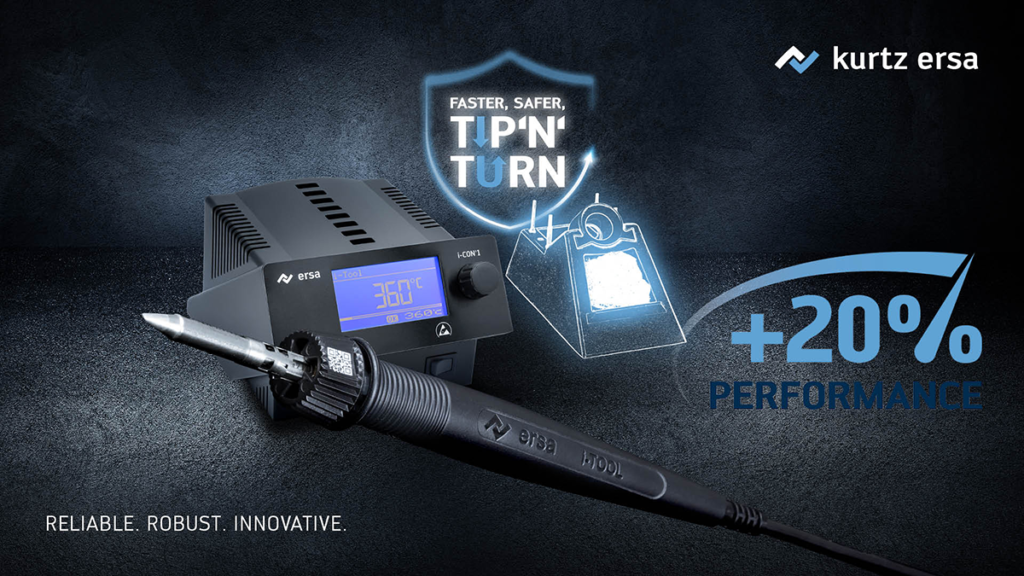
Overview Hand Soldering
Soldering tools are used to make or repair solder joints with solder (typically using alloys with melting points below 450 °C). In the age of sensitive assemblies and components, temperature-controlled soldering tools are used for Surface Mount Technology (SMT) and Through Hole Technology (THT). These ensure optimum soldering results at low soldering temperatures. Ersa soldering tools are characterized by reliable function, robust and attractive design and years of industry experience. In short: the correct soldering and desoldering tool for every application.
Hand soldering tools, depending on application, can be divided into the following categories:
Soldering and desoldering stations with temperature controlled soldering tools:
– High precision soldering irons
– Desoldering tools (THT)
– Tweezers (SMT)
– Hot air convection tools
– High power soldering ironsRegulated power soldering irons for demanding applications
Mobile soldering tools for use without a power supply
Unregulated power soldering irons for simple or occasional soldering tasks
Ersa soldering tools for industrial use meet all requirements of ESD protection.
Soldering components
In addition to choosing the correct soldering tool and the correct soldering temperature, the soldering tip must also be suitable for the application (SMT and THT). The tip is responsible for the heat entering the solder joint; if it is too small, the soldering process takes too long and the component or board can be damaged. If it is too large, the component or board can be exposed to excessive heat. With the correct tool, the correct solder wire and the correct application, a reliable solder joint is created within a few seconds.
Alternatively, hot air or convection can be used for SMT components. After preparing the joint, the component is heated with the appropriate nozzle, air flow and temperature. It is important that all joints receive sufficient heat. Complete rework systems can be used when greater process control is required.
When solder is reflowed, an electrical and mechanical connection is made between the component and the substrate. When the solder wire or solder paste melts, oxides on the surfaces are first removed with flux. After the addition of heat, an intermetallic layer forms on the metallic contact surfaces. Once the solder has cooled, the solder joint is immediately ready.
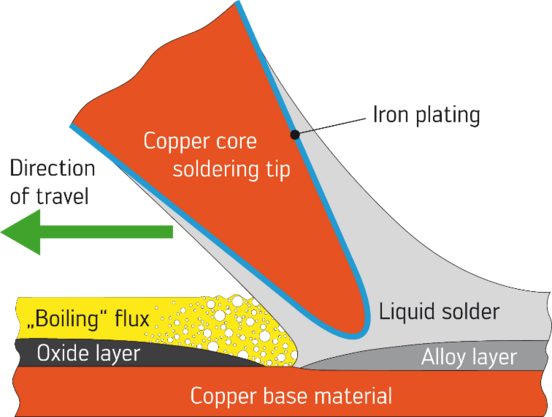
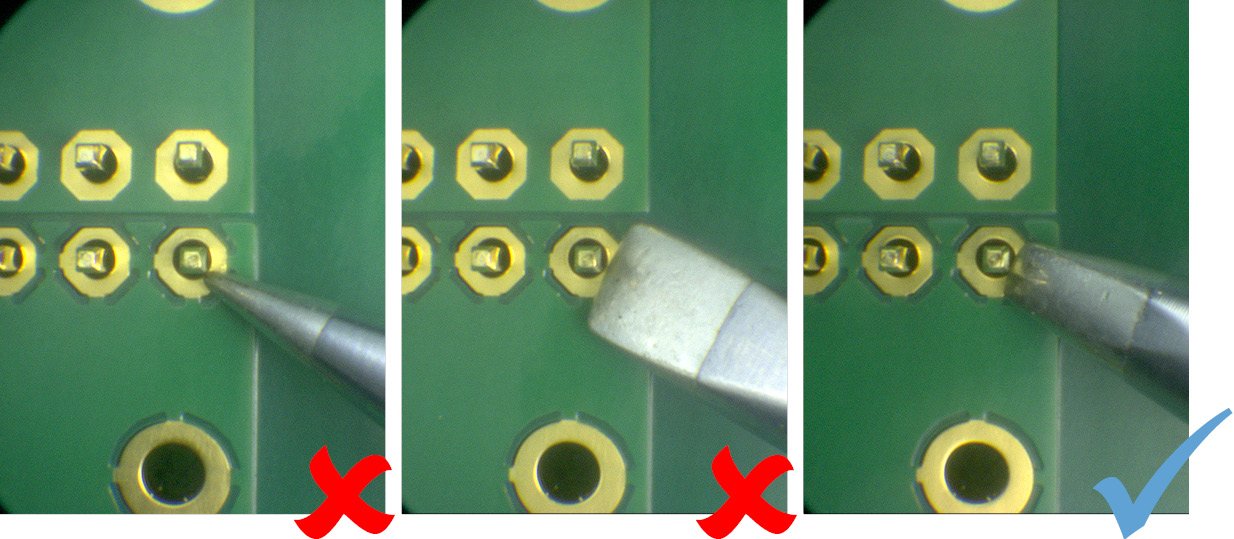
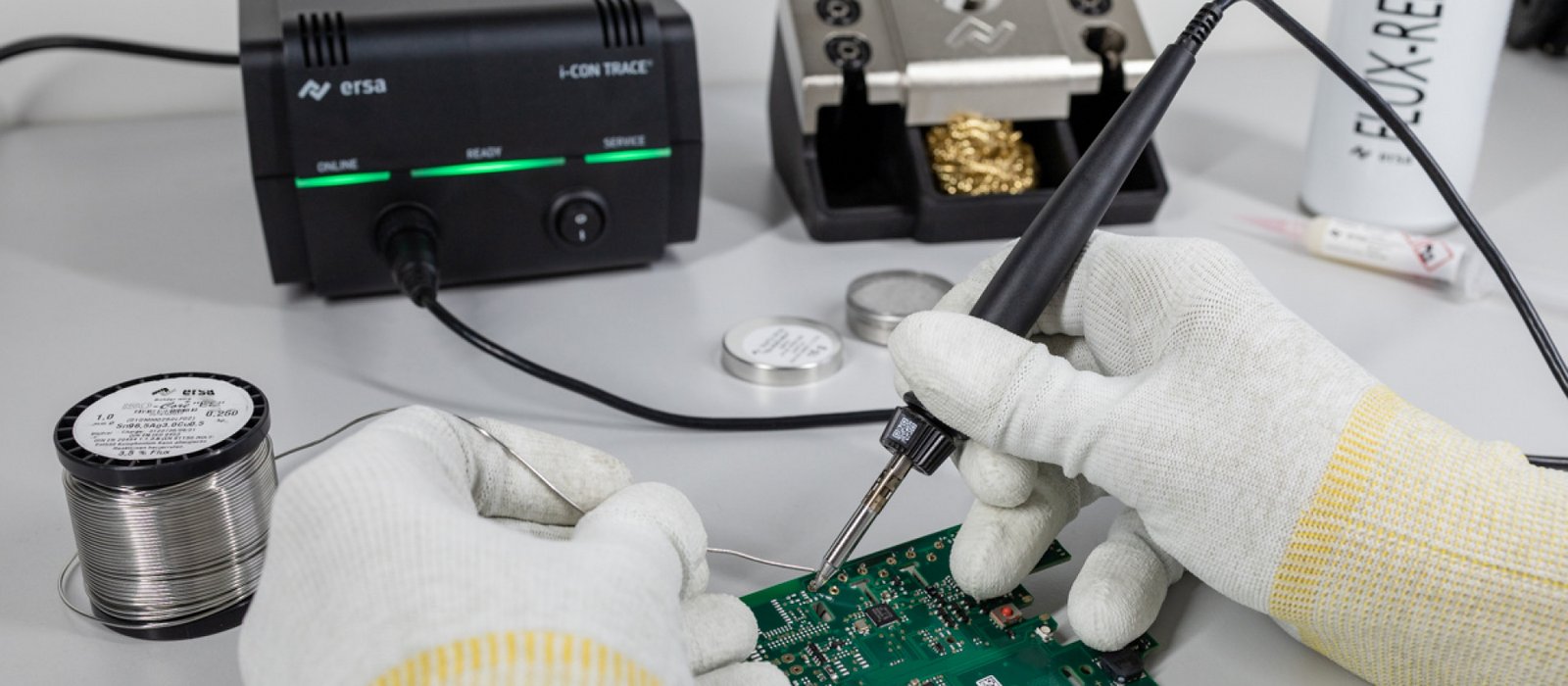
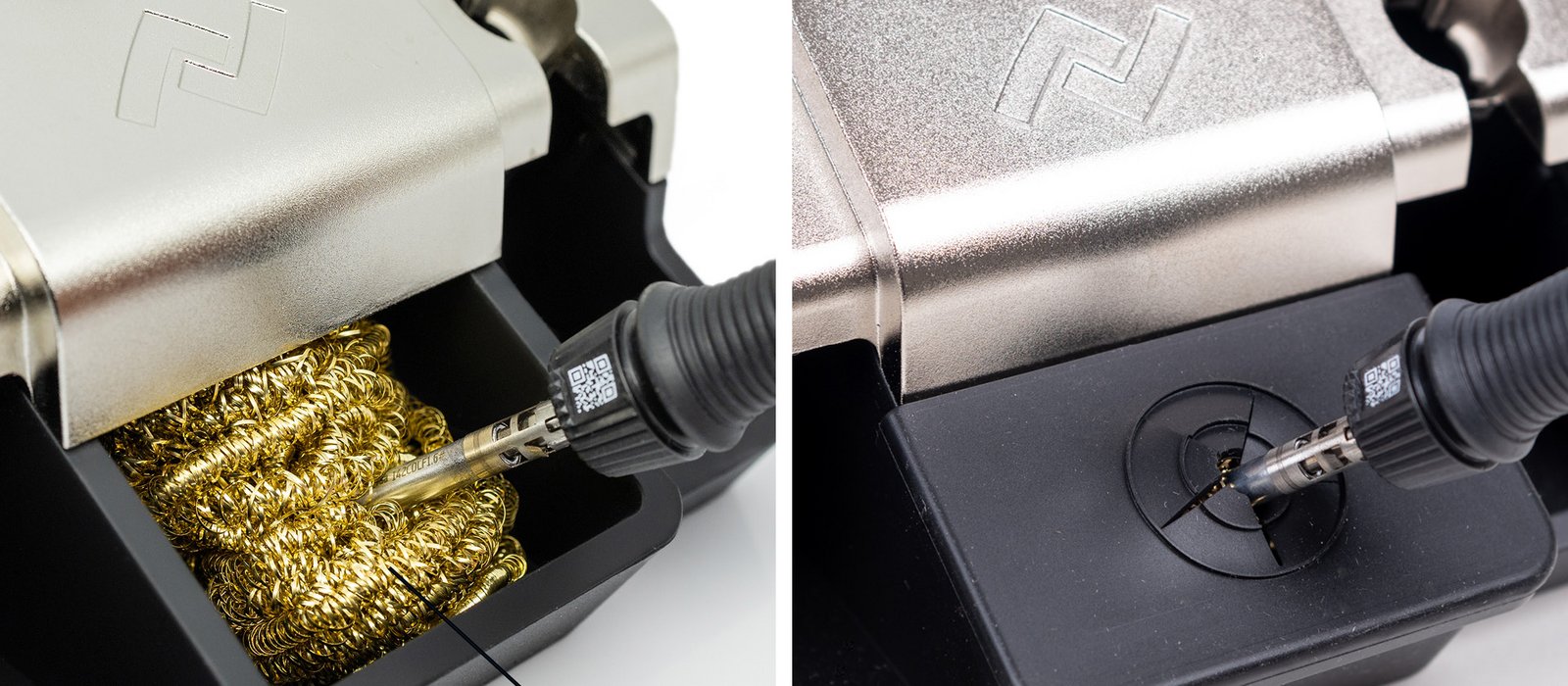

Desoldering components
In addition to a soldering iron, a vacuum tool and a hot air tool, special desoldering tools (THT) or tweezers (SMT) can be used for manually desoldering components. With the desoldering iron, the leads of the component are reflowed individually, and the solder is sucked out of the hole or barrel using vacuum. Each pin must be desoldered separately.
For high-mass assemblies, it is recommended to preheat the board. If tweezers with two heated soldering tips are used, the SMT component can be removed directly as soon as the solder reflows. Components such as SOIC can also be reworked in this way. Rework systems are recommended for complex components, especially those with hidden solder joints.
Documenting process data
Industrial manufacturing processes require process control and documentation. It is therefore logical that today’s soldering stations should be capable of documenting all relevant parameters during the processing of an assembly. The soldering station should be network-capable i.e. it has wireless and wired communication interfaces. The system should have software to specify the parameters and to store the process data. Data transfer to manufacturing execution systems (MES) should be possible. Ersa has been delivering the i-CON TRACE, the first true IoT soldering station, since 2021, 100 years after Ernst Sachs patented the first electrical soldering iron.
The TRACE COCKPIT allows all soldering stations to be connected to a server via WLAN or LAN. The soldering temperature can be defined for the soldering tasks (jobs). The soldering tip and materials such as solder wire and flux can also be defined. The user can scan the assembly number as well as the materials used, thus documenting the entire workflow which is automatically archived.
The Ersa TRACE APP for iOS and Android offers users the ability to control soldering stations with a mobile device.


Hand soldering and more - functional accessories
Hand soldering tools require additional accessories and spare parts to meet customer requirements. Fast and global availability of spare parts and accessories rounds off the Ersa product portfolio:
- A wide range of tips and with the option of custom specialty tips is crucial for users
- Infrared heating plates provide the preheating when soldering on high-mass assemblies
- Solder fume extraction systems with a good filtering effect (HEPA) and low emissions create a healthy working environment at the hand soldering workplace



